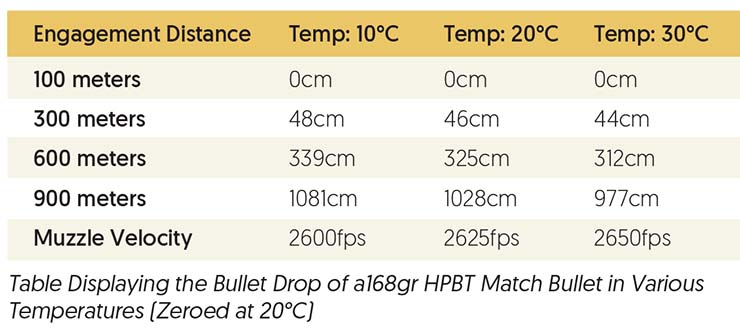What makes it so hard to hit the target, shot after shot?
Every time you pull the trigger, a host of physical and environmental factors come into play, affecting the final outcome. To hit the mark consistently, you need a clear understanding of these factors.
Before we even get into that, here’s a snapshot of popular ammunition calibers used worldwide by the military:

If you have been involved with shooting, you’ve likely heard the terms “accuracy” and “precision” used a lot, probably even interchangeably. But do you really know the difference between accuracy and precision?
Let’s take a deeper look at these terms and why they are important. You can then use the knowledge to sharpen your shooting skills and improve the performance of your firearm.
Accuracy
Accuracy is perhaps the most widely used term of the two. It describes how close your shots are to the target. Seems simple enough, right?
Accuracy is important because you want to hit what you’re aiming at. This is always the goal and rings true for any discipline of shooting, be it pistol shooting, shot gunning, precision rifle or even self-defence.
Precision
While precision is of equal importance, it is measured differently. It is a measurement of how close multiple shots are. In other words, when shooting at your target, how close are your shots to each other?
This concept is also applied to any discipline of shooting, but as the name implies, it’s a major focus for precision rifle shooters.

Back to the question – what are the factors that affected the outcome of these shots?
Several factors come into play here, such as temperature, altitude (barometric pressure) and wind speed. The atmospheric temperature, the gun barrel, and the ammunition all play a small but significant part in the accuracy of your shot. Let’s take a look.
Temperature of the Gun Barrel
When a barrel heats up, the gun becomes less accurate.
- Both the friction of the bullet and the exploding charge propelling it heats up the gun barrel. The internal barrel will expand slightly, allowing some of the exploding charge to leak past the bullet, reducing speed and momentum and affecting the accuracy of the shot.
Temperature of the Ammunition
- When snipers go for long (~1 mile) shots, they take out the magazine and leave it in the sun, allowing the ammo to warm up. They will then load a single bullet at a time since a warm bullet is likely to be more accurate.
- Most military small-arms propellants are relatively sensitive to temperature. Warming ammunition in the sun or under a coat has nothing to do with expanding the diameter of the projectile, but is rather about wringing the last bit of muzzle velocity out of the round’s propellant.
Atmospheric Temperature
Temperature alters a bullet’s trajectory in two ways. The first change takes place in the chamber and cartridge itself. This is known as the internal temperature. The second is the air temperature outside, known as the external temperature. As the temperatures rise, muzzle velocity increases while air density gets thinner, reducing the drag on the bullet.
If the ammo is not shaded from the sun, the warm propellant will increase chamber pressure, making the bullet fly faster. This higher velocity causes a flatter trajectory and results in the bullet striking the target slightly higher than a slower moving bullet. Combined with the thinner air density, even the best marksman will find it difficult to strike the target dead centre unless sight adjustments are made.
High temperatures also cause mirages. A mirage is a good indicator of wind speed and direction. It can also cause image distortion, with the target appearing to be moving in a wavy fashion. In that case, you need to reduce scope magnification for a clearer image.

What happens when temperature drops?
Air density affects the ballistics of your ammo. The lower the temperature, the higher the density. If the temperature drops 20 degrees, it’ll cause the bullet to impact the target lower by one inch per 100 yards.
Your Weapon’s Zero
If you previously zeroed your weapon at 32°C and you’re now in freezing temperatures, your ammo could impact the target nine inches lower at 300 meters. The best way to ensure a hit is to zero your weapon again with the ammo you’re carrying and confirm your battle sight zero at 300 meters in forecasted weather conditions.

It’s also important to keep your weapon and ammo dry in extremely cold weather. What happens when you bring your weapon in from the cold? The warm, humid indoor environment causes
condensation to form on your weapon and ammo. If you take your weapon back outside with condensation on the ammo, then it’ll freeze and cause serious problems. That’s why the best thing to do is to secure weapons and ammo outside.
-The Writer is the Managing Director of Hughes Precision Manufacturing Pvt. Ltd., India’s first small calibre manufacturer in the private sector.








